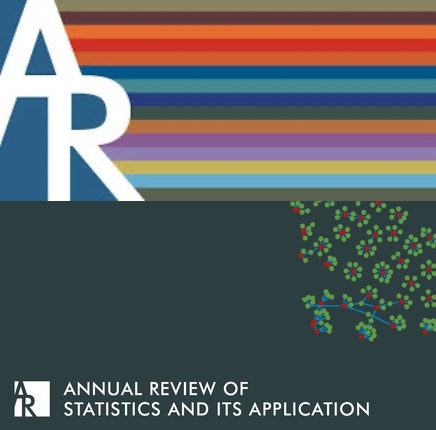Role of Statistics in Detecting Misinformation: A Review of the State of the Art, Open Issues, and Future Research Directions
IF 8.7
1区 数学
Q1 MATHEMATICS, INTERDISCIPLINARY APPLICATIONS
Annual Review of Statistics and Its Application
Pub Date : 2023-10-13
DOI:10.1146/annurev-statistics-040622-033806
引用次数: 0
Abstract
With the evolution of social media, cyberspace has become the default medium for social media users to communicate, especially during high-impact events such as pandemics, natural disasters, terrorist attacks, and periods of political unrest. However, during such events, misinformation can spread rapidly on social media, affecting decision-making and creating social unrest. Identifying and curtailing the spread of misinformation during high-impact events are significant data challenges given the scarcity and variety of the data, the speed by which misinformation can propagate, and the fairness aspects associated with this societal problem. Recent statistical machine learning advances have shown promise for misinformation detection; however, key limitations still make this a significant challenge. These limitations relate to using representative and bias-free multimodal data and to the explainability, fairness, and reliable performance of a system that detects misinformation. In this article, we critically discuss the current state-of-the-art approaches that attempt to respond to these complex requirements and present major unsolved issues; future research directions; and the synergies among statistics, data science, and other sciences for detecting misinformation.Expected final online publication date for the Annual Review of Statistics and Its Application, Volume 11 is March 2024. Please see http://www.annualreviews.org/page/journal/pubdates for revised estimates.统计在检测错误信息中的作用:对最新技术、开放问题和未来研究方向的回顾
随着社交媒体的发展,网络空间已经成为社交媒体用户交流的默认媒介,特别是在大流行、自然灾害、恐怖袭击和政治动荡等影响重大的事件期间。然而,在此类事件中,错误信息可以在社交媒体上迅速传播,影响决策并造成社会动荡。鉴于数据的稀缺性和多样性、错误信息传播的速度以及与这一社会问题相关的公平性,在高影响事件期间识别和遏制错误信息的传播是一项重大的数据挑战。最近统计机器学习的进展显示出错误信息检测的前景;然而,关键的限制仍然使这成为一个重大的挑战。这些限制涉及到使用代表性和无偏见的多模态数据,以及检测错误信息的系统的可解释性、公平性和可靠性能。在本文中,我们批判性地讨论了当前最先进的方法,这些方法试图响应这些复杂的需求,并提出了主要的未解决问题;未来研究方向;以及统计学、数据科学和其他检测错误信息的科学之间的协同作用。预计《统计年鉴及其应用》第11卷的最终在线出版日期为2024年3月。修订后的估计数请参阅http://www.annualreviews.org/page/journal/pubdates。
本文章由计算机程序翻译,如有差异,请以英文原文为准。
求助全文
约1分钟内获得全文
求助全文
来源期刊

Annual Review of Statistics and Its Application
MATHEMATICS, INTERDISCIPLINARY APPLICATIONS-STATISTICS & PROBABILITY
CiteScore
13.40
自引率
1.30%
发文量
29
期刊介绍:
The Annual Review of Statistics and Its Application publishes comprehensive review articles focusing on methodological advancements in statistics and the utilization of computational tools facilitating these advancements. It is abstracted and indexed in Scopus, Science Citation Index Expanded, and Inspec.
 求助内容:
求助内容: 应助结果提醒方式:
应助结果提醒方式:


